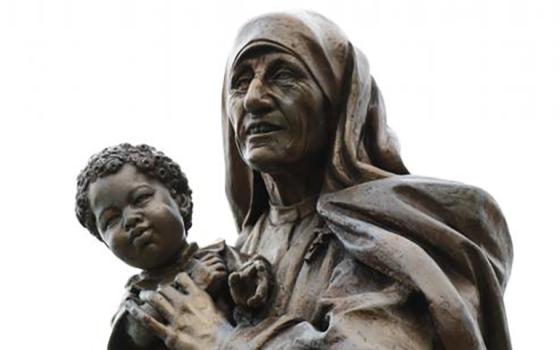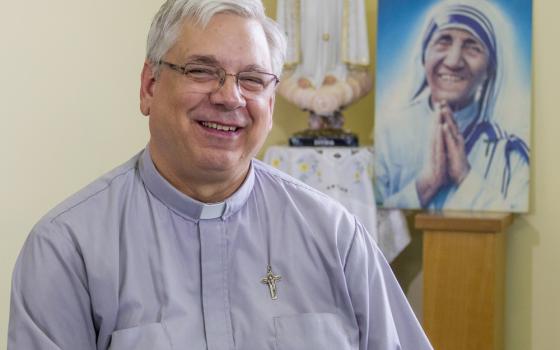First Person
Mother Teresa once said, "If I ever become a saint — I will surely be one of 'darkness.' I will continually be absent from Heaven — to light the light of those in darkness on earth." On September 4, Mother Teresa will indeed be made a saint by Pope Francis at a ceremony at the Vatican. Hundreds of thousands from all corners of the world are expected to attend the event.
There has never been a question about whether Mother Teresa would become a saint, but when it would happen. The diminutive Albanian nun died in 1997. Two years later, her good friend Pope John Paul II (now canonized himself) dispensed with the requisite five-year waiting period and allowed the gathering of testimony and documentation for consideration of sainthood. This rigorous undertaking included more than 100 interviews of people who knew her and created some 80 volumes at more than 400 pages each.
In late 2002, the pope approved the decrees confirming her heroic virtue and the first miracle attributed to her — the healing of an Indian woman's abdominal tumor. Mother Teresa was beatified on Oct. 19, 2003, at a Vatican ceremony in front of an estimated 300,000 people. This writer was in attendance that day.
When a priest or woman religious is on a pathway to sainthood, he or she becomes part of the larger church, and of the world, and it falls to the religious order to take steps to manage the heritage of that holy person.
In late 2003, I received a telephone call from my friend Jim Towey, then head of President George W. Bush's White House Office of Faith-Based and Community Initiatives. Jim was a longtime friend of Mother Teresa's and often assisted her and her religious community with various legal matters.
Due to his federal government position, Towey had to step back from active involvement with the Missionaries of Charity. He asked if I would help Missionaries of Charity Fr. Brian Kolodiejchuk, a postulator or advocate for the cause of canonization, to consider ways to create an organizational structure — separate from the cause office — that would enable the promotion of, and devotion to, Mother Teresa. As a lawyer, I spent much time advising faith-based and secular not-for-profit organizations on governance and related issues.
I was happy to do so.
A short time later, I presented a memorandum describing options to Kolodiejchuk and Sr. Nirmala Joshi, a lawyer and Mother Teresa's successor as superior general of the Missionaries of Charity Sisters based in Kolkata, India. The outcome was the creation of the Mother Teresa of Calcutta Center Inc., a New York State not-for-profit entity governed by the Missionaries of Charity family, which includes sisters, priests and brothers. A lawyer friend of mine at a large law firm in New York City prepared the legal and tax documentation for free.
Today, the Mother Teresa Center aims "to promote authentic knowledge of, and devotion to, Mother Teresa by the study, development and distribution of her work, spirituality and message," according to its website.
For two years (2004-2006), I served as a full-time volunteer and the sole, lay administrator of the Mother Teresa Center. The work was interesting, varied and singular.
Kolodiejchuk and a small team of indefatigable Missionaries of Charity sisters working on the cause of canonization were based in Tijuana, Mexico. Since I lived in the New York City area, I spent much time running around the city meeting various people, recruiting lawyer friends to advise the Missionaries of Charity on a pro bono basis, and collecting research related to one possible miracle.
Mother Teresa was against the use of her image or words for traditional mass-mailing fundraising appeals. When this activity was brought to our attention, I would write a letter of explanation of her wishes and recipient organizations consistently agreed to comply.
The great affection so many people around the world have for Mother Teresa prompted more than a few to write books about her. Some of the words attributed to her were not always accurate. Communicating with writers and publishers about these concerns was an important attempt to eliminate falsehoods.
To address the hunger for authentic written material, the Mother Teresa Center created prayer cards, pamphlets and the official Mother Teresa novena booklet, all of which required careful editing, designing and printing. Archbishop Emeritus Harry Flynn of St. Paul-Minneapolis, a good friend of Mother Teresa's, provided the novena's imprimatur.
Volunteers gave of their time and talents to these literary projects. The Knights of Columbus of New Haven, Connecticut (of which this writer is a member), printed all of these materials for free.
The few possessions of Mother Teresa included her two saris, one well-worn and patched, the other one used on special occasions. I was asked to secure an expert textile preservationist to analyze the fabrics and advise on how to preserve them. I collected the saris from a convent in the Bronx, and drove to upstate New York to a team of experts who regularly advise major New York City museums on their artifacts. A week later, I returned the saris to the convent, along with a written report on how to care for these relics.
In December 2004, I traveled to Kolkata to assist Joshi, Kolodiejchuk and the few other members of Mother Teresa Center board of directors at its inaugural meeting held at the motherhouse, where Mother Teresa's tomb is located. I did this again in December 2005.
One of the more substantial projects undertaken by the center was selecting a literary agent and publisher for Mother Teresa's private letters, which described her intense spiritual darkness. Several of each were contacted and interviewed in person by Kolodiejchuk and me. The sisters and Kolodiejchuk selected a New York City-based literary agent, Sterling Lord Literistic Inc., and Doubleday as publisher.
The 416-page book of letters and reflections, Mother Teresa: Come Be My Light (2007), became an instant New York Times best-seller.
The center also wrote the U.S. Postal Service in support of the issuance of a Mother Teresa stamp. The postal service selected ward-winning artist Thomas Blackshear II of Colorado Springs, Colorado, to design the stamp. On the anniversary of her death, Sept. 5, 2010, a commemorative stamp was released with a print run of 60 million and at a cost of 44 cents each.
In December 2015, Pope Francis confirmed a second miracle attributed to Mother Teresa that occurred in 2008 — a comatose Brazilian man suffering a viral brain infection awoke as a result of her intercession — and set Sept. 4 as the day of canonization.
To commemorate the current Jubilee Year of Mercy called by Pope Francis and the canonization, the Mother Teresa Center, in collaboration with Image, an imprint of Crown Publishing Group, just published a 384-page book titled A Call to Mercy: Hearts to Love, Hands to Serve, based on unpublished material from Mother Teresa.
With the world filled with so much darkness, St. Mother Teresa of Kolkata will surely be continually absent from heaven.
[Tom Gallagher is a regular contributor to NCR on domestic and foreign affairs. Tom will present “Contemplation in Action in the Life of Mother Teresa of Calcutta,” a free lecture at Rockhurst University on Monday, Sept. 26 at 7:30 pm. For more information, go to www.rockhurst.edu/gallagher.]


